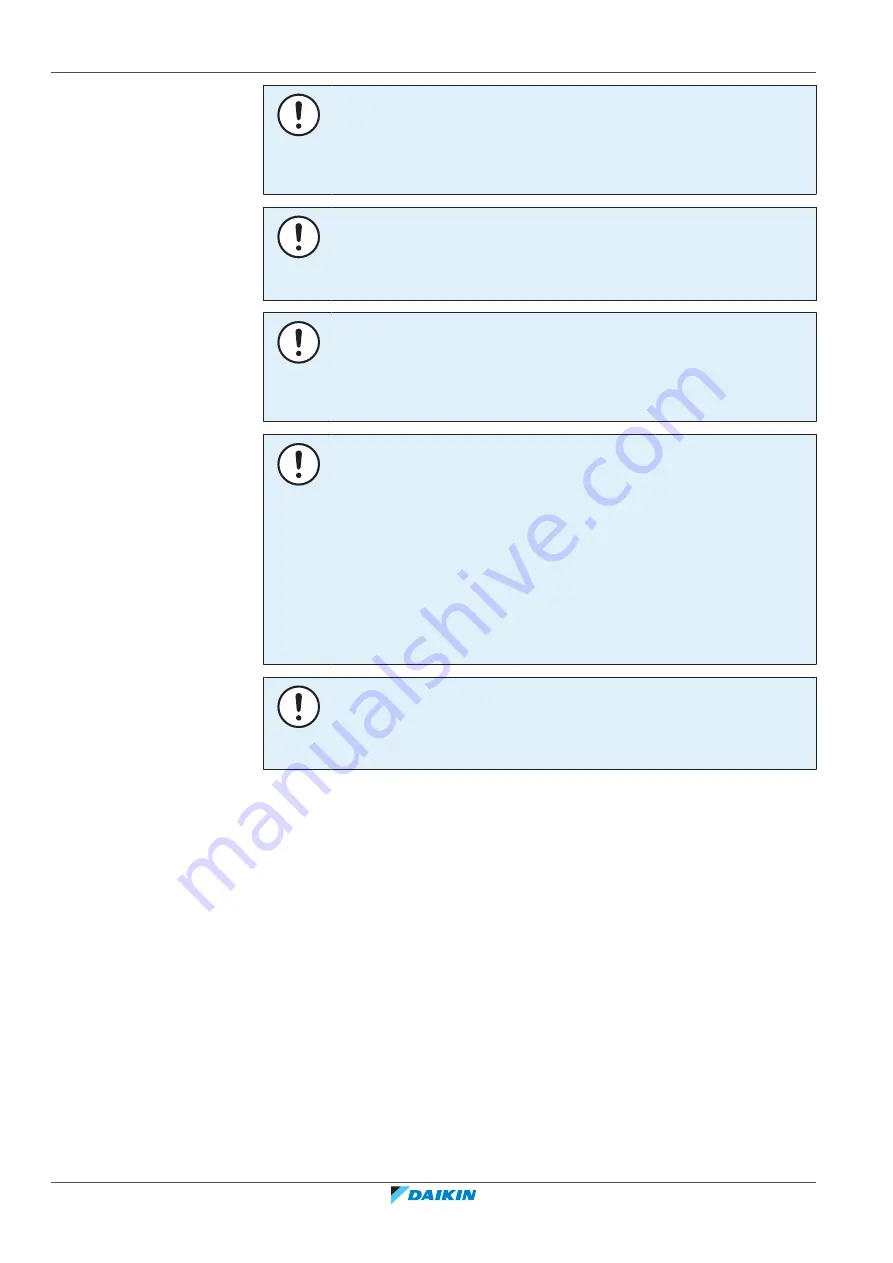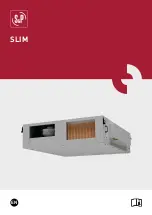
19
|
Charging refrigerant
Installer and user reference guide
106
REMA5+REYA8~20A7Y1B
VRV 5 heat recovery
4P687640-1 – 2022.07
NOTICE
Before starting charging procedures, check if the 7‑segment display indication of the
outdoor unit A1P PCB is as normal (see
"21.1.4 To access mode 1 or 2"
130]). If a
malfunction code is present, see
"25.3 Solving problems based on error
NOTICE
Close the front panel before any refrigerant charge operation is executed. Without
the front panel attached the unit cannot judge correctly whether it is operating
properly or not.
NOTICE
In case of maintenance and the system (outdoor unit+BS unit+field indoor
units) does not contain any refrigerant any more (e.g., after refrigerant reclaim
operation), the unit has to be charged with its original amount of refrigerant (refer to
the nameplate on the unit) and the determined additional refrigerant amount.
NOTICE
▪
Ensure that contamination of different refrigerants does not occur when using
charging equipment.
▪
Charging hoses or lines shall be as short as possible to minimise the amount of
refrigerant contained in them.
▪
Cylinders shall be kept in an appropriate position according to the instructions.
▪
Ensure that the refrigerating system is earthed prior to charging the system with
refrigerant. See
115].
▪
Label the system when charging is complete.
▪
Extreme care shall be taken not to overfill the refrigerating system.
NOTICE
Prior to charging the system, it shall be pressure tested with the appropriate purging
gas. The system shall be leak tested on completion of charging but prior to
commissioning. A follow up leak test shall be carried out prior to leaving the site.
19.2 About charging refrigerant
Once vacuum drying and leak test are finished, additional refrigerant charging can
start.
To speed up the refrigerant charging process, it is in case of larger systems
recommended to first pre-charge a portion of refrigerant through the liquid line
before proceeding with the actual charging. This step is included in below
procedure (see
110]). It can be skipped, but
charging will take longer then.
A flow chart is available which gives an overview of the possibilities and actions to
be taken (see
"19.5 To charge refrigerant: Flow chart"
110]).
















































